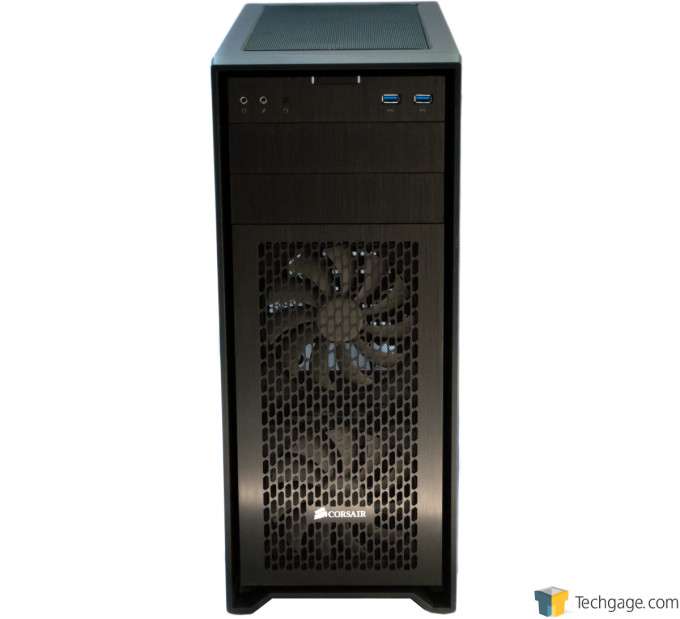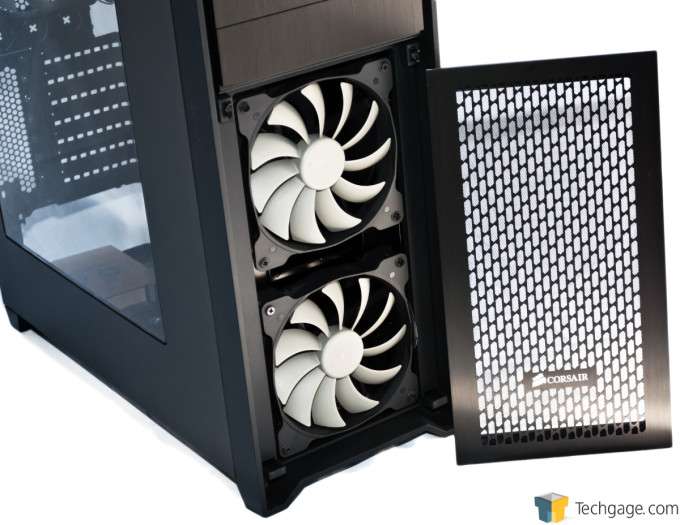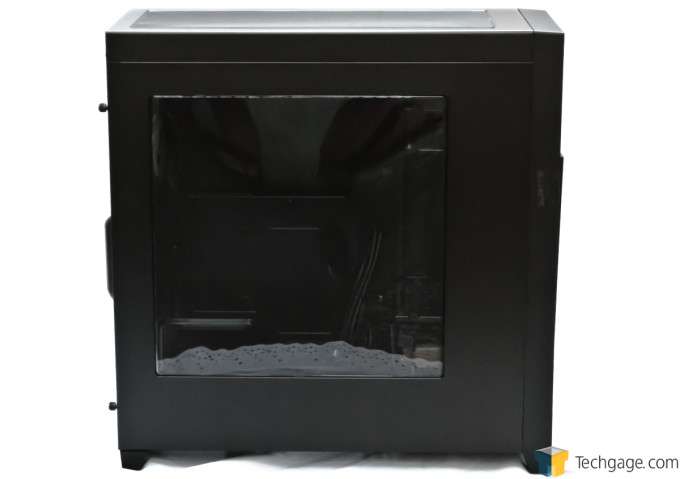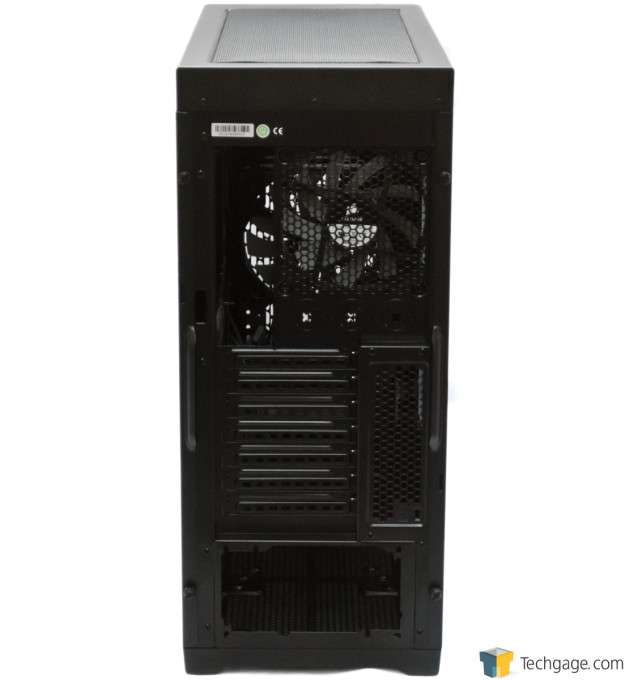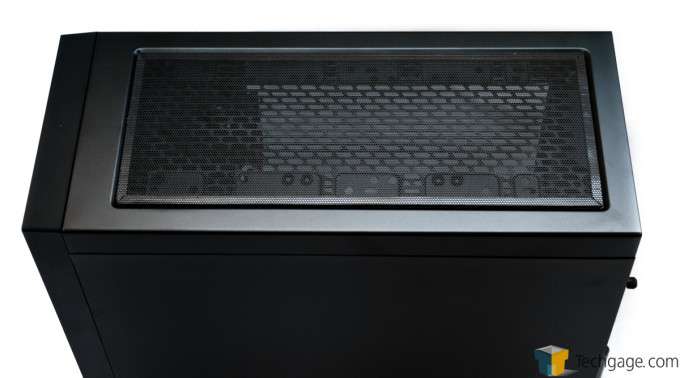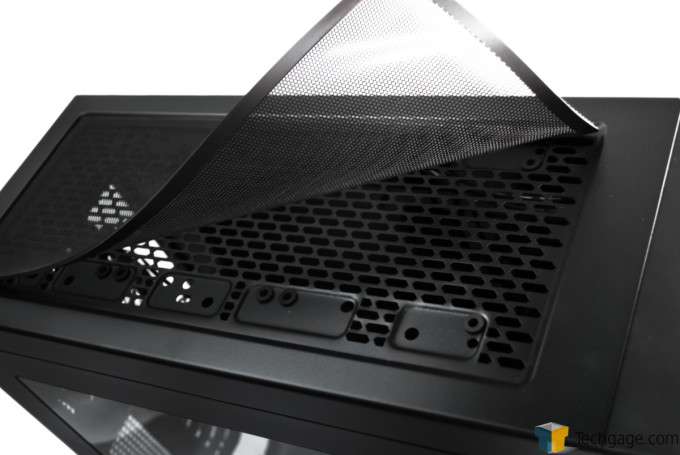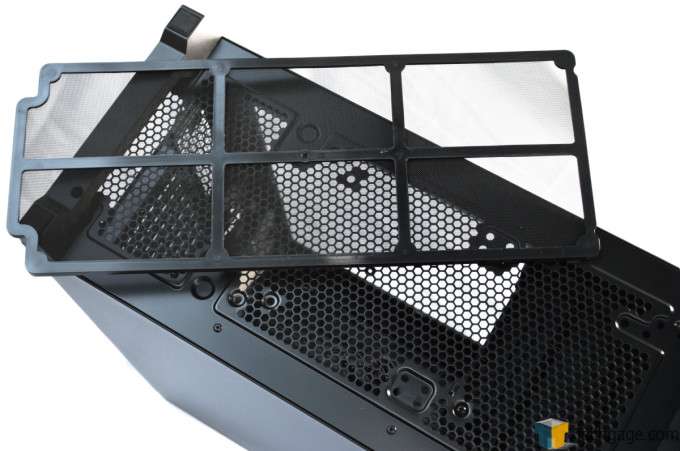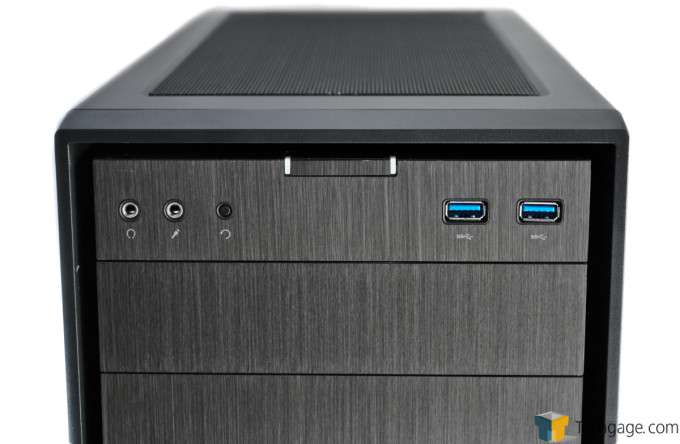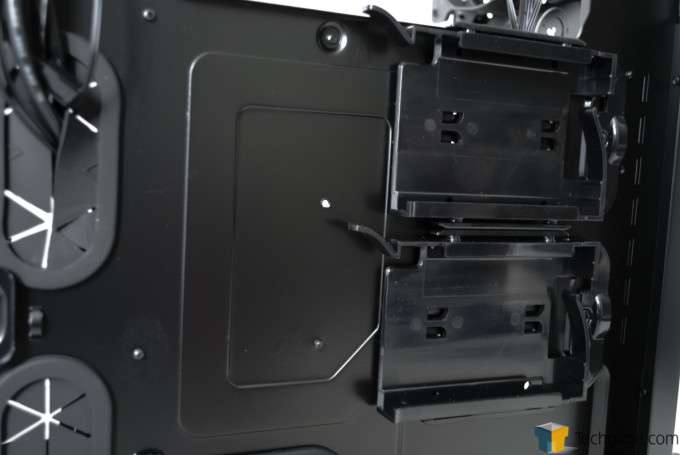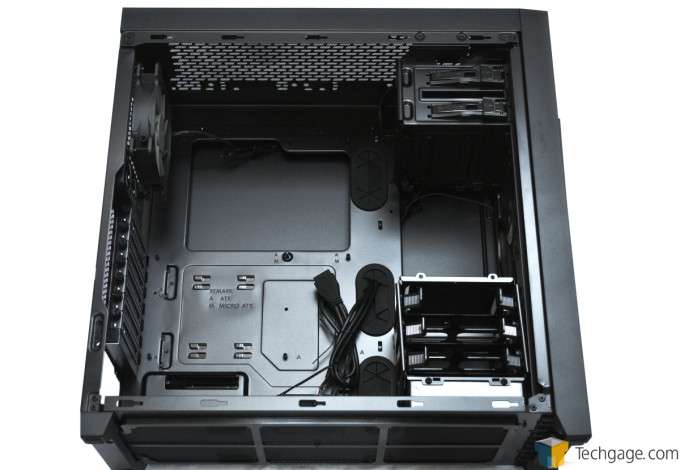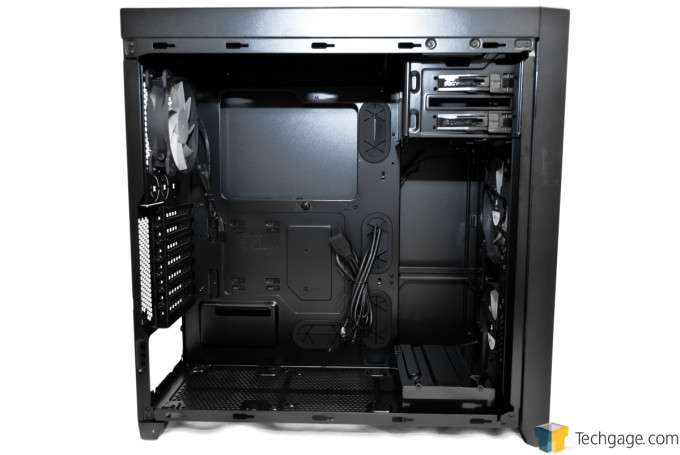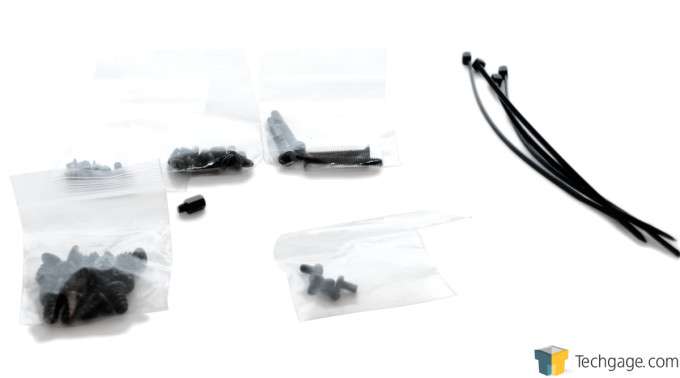- Qualcomm Launches Snapdragon 4 Gen 2 Mobile Platform
- AMD Launches Ryzen PRO 7000 Series Mobile & Desktop Platform
- Intel Launches Sleek Single-Slot Arc Pro A60 Workstation Graphics Card
- NVIDIA Announces Latest Ada Lovelace Additions: GeForce RTX 4060 Ti & RTX 4060
- Maxon Redshift With AMD Radeon GPU Rendering Support Now Available
Corsair Obsidian 450D Chassis Review – Hitting the Sweet Spot

Corsair’s Obsidian series of PC chassis represents the apex of the company’s offerings in the market. Innovative and user-friendly, they’ve also been overkill for most users. Now, though, the 450D has come onto the scene, intent on proving that the Obsidians shouldn’t be the exclusive preserve of users with deep pockets. Does it live up to its pedigree?
Page 1 – Introduction
Corsair entered the chassis market with its iconic Obsidian 800D way back in 2009. Even back then, I was impressed with that chassis’ design and aesthetic. At that time I couldn’t afford or justify getting the 800D, but I settled for its slightly more sensible and affordable brother, the 700D. To this day, it has remained as one of my all-time favorite PC chassis.
Fast-forward two years, and a third Obsidian chassis joined the ranks, the 650D. Our very own Ryan Perry reviewed it in May 2011. One year after that, the family welcomed another member, the smaller 550D. Both the 650D and the 550D, by the way, were good enough to earn Techgage’s Editor’s Choice award.
Last year, Corsair expanded the Obsidian range yet again. It introduced the gargantuan 900D as well as the scaled-down 750D. Although Techgage did not get a chance to review either chassis, I have to confess that I so dearly wanted to get my hands on the 900D. I just have this thing for well-designed, no-nonsense PC chassis that boast innovative features and all-black paint jobs.
All told, the Obsidian range is huge these days. Although the 700D has been discontinued for the last three years or so now, there are now no fewer than nine models available. Aside from the aforementioned 900D, 800D, 750D, 650D, and 550D, the Obsidian family of chassis also includes the two 350D variants (Windowed and standard) for mATX systems, the 250D for mITX PCs, and, finally, the star of this review, the mid-tower 450D.
We actually wrote a news item when Corsair announced the Obsidian 450D back in March of this year. When I saw pictures of it and wrote the news story, I requested Techgage chef d’equipe Rob to secure a sample for me to review. He acquiesced, and Corsair delivered, much to my delight.
The Corsair Obsidian 450D is a proper mid-tower PC chassis. As with the rest of its family members, it features that signature monolithic black look that I just simply adore. Black, imposing, albeit a little less than actually large compared to its bigger brothers (especially the 900D and 800D).
One look at it, and you recognize the Obsidian DNA immediately. It’s got the no-nonsense aesthetic going for it, with its Darth Vader-like all-black color scheme and hard edges. Try as you might, you won’t find any feminine curves on this chassis. Perhaps the only feature that sort of deviates from the majority of its Obsidian brothers is the prominent front air intake grille, a feature that only the 650D shares.
That air intake grille is actually a removable air filter. Push on its top corners to release it from its catches. This makes it easy to access the twin 140mm fans and clean the filter itself as needed. If you wish, you can also fit two 120mm fans or a 240mm/280mm radiator in this position. The two 140mm fans are included as standard.
This view shows the window installed on the left side panel. Rather like the transparent engine lids of many supercars, this allows people a look into the heart of the beast. Particularly noteworthy about this window is that it is mounted flush with the side panel, a detail I appreciate a lot. As an aside, I’m a bit of a fuddy-duddy (purely a function of my age, most likely), so windowed side panels aren’t really my bag; I’m past the time when I definitely wanted people to see into my PC’s innards. I wish there was a non-windowed option for the Obsidian 450D, but not having one is definitely not a deal-breaker. By the way, both side panels are affixed to the chassis with a pair of thumbscrews.
Moving on to a view of the rear, well, there’s really nothing spectacular here. Everything you’d come to expect from a well-designed chassis is here. The rear exhaust fan is a 120mm Corsair fan. Perhaps the most salient features here are the three grommeted openings for externally-mounted radiators (not that this is the typical way of doing a custom water-cooling set-up these days; at least the option is available), seven PCI expansion slots, which is appropriate for most systems bar the highest end builds, and the bottom-mount position for the PSU (I still remember the time when power supplies, by far a PC’s heaviest single component, were mounted above the motherboard). A somewhat unique detail is the vented panel to the right of the expansion panel. This should facilitate airflow through the rear of the Obsidian 450D.
There’s nothing of note on the Obsidian 450D’s right side panel, so our visual tour continues with a look at the top of the chassis. Dominating this view is a vented opening, under which are mounting points for either a 3 x 120mm fan/radiator set-up, or a 2 x 140mm equivalent. Out of the box, the Obsidian 450D has these fan mount positions vacant.
The top fan mounts are protected by a clever magnetized dust filter. This is, by far, the most innovative dust filter I’ve ever seen. It is flexible and peels off the chassis roof panel, making clean-up a breeze. It’s such an elegant (and aesthetically beautiful) solution that it makes me wonder why PC chassis haven’t always had this.
The bottom surface of the chassis also features a full-length magnetized dust filter. The filter is pictured removed to show the floor of the chassis. What’s notable here is that virtually the entire chassis floor is vented. The rear venting is for the PSU’s air intakes, while the vents in front of it are to feed any fans/radiators that may be mounted at that position. Alternatively, you can leave these vents fan-free, and air can still enter through these openings. Corsair did not include fans for the floor vents, but you can install two 120mm fans if you wish.
Back at the front of the chassis, the I/O panel sits atop the two 5.25 optical drive bays. At the top edge of the I/O panel is the power switch. To its left are the 3.5mm audio connectors (headphone out + microphone in) and small Reset button; to its right is a pair of USB 3.0 ports. The Obsidian 450D does not have any USB 2.0 ports on the I/O panel. However, it’s worth noting that there is a good amount of space between the two USB 3.0 ports, which should account for wider USB devices being plugged in them simultaneously. Good attention to detail, Corsair.
Speaking of attention to detail, you’ll see an excellent example of this in a place which most end users never bother to check: The rear of the motherboard tray. Just below the CPU cooler cut-out is a pair of SSD mounting cradles. I’m quite chuffed to see this particular feature at last as a stock feature on a PC chassis. In past personal system builds I’ve been wanting to mount my SSDs in precisely this part of the chassis; where I’d resort to such kludge solutions as Velcro or double-sided tape, Corsair has come up with a clever, well-engineered execution of the concept.
We’ll conclude our visual tour of the Obsidian 450D with a look at the chassis’ interior.
You can clearly see the motherboard tray, which is dominated by the largest cutout for accessing the backplate for the CPU socket area. But also clear to see are the four grommeted oval openings for cable management, a feature seen in the first Obsidians, the 800D and 700D. Also, note that all the cable sleeves for the I/O panel-to-motherboard connections are black. There’s a reason for this, as you’ll see later in the review.
The top front of the interior shows the tool-less optical drive bays, while the HDD/SSD drive cage sits just above the floor on a raised plastic box. This drive cage can actually be mounted under the optical drive bays as well, or removed completely (to accommodate a front-mounted dual radiator, perhaps) as shown in the following photo.
This option might be useful for users who may want to install a 240mm radiator on the floor, for example. Just remember to remove that plastic vanity panel on the floor, which is done by undoing four screws.
Corsair includes a box of accessories comprised of several baggies of screws of different types and sizes and a few black zip-ties. It’s a sparse, basic bundle, but it does come with most of what you need to install a system. The only thing I’m a little miffed about is that it didn’t come with screws for the PSU. I honestly don’t recall whether or not any of my previous chassis included these screws, but I found their absence from the accessories package to be somewhat inconvenient.
Now that we’ve seen the Obsidian 450D in detail, let’s install a system in it and appraise it from that angle. After that we’ll have some concluding thoughts.
Support our efforts! With ad revenue at an all-time low for written websites, we're relying more than ever on reader support to help us continue putting so much effort into this type of content. You can support us by becoming a Patron, or by using our Amazon shopping affiliate links listed through our articles. Thanks for your support!




